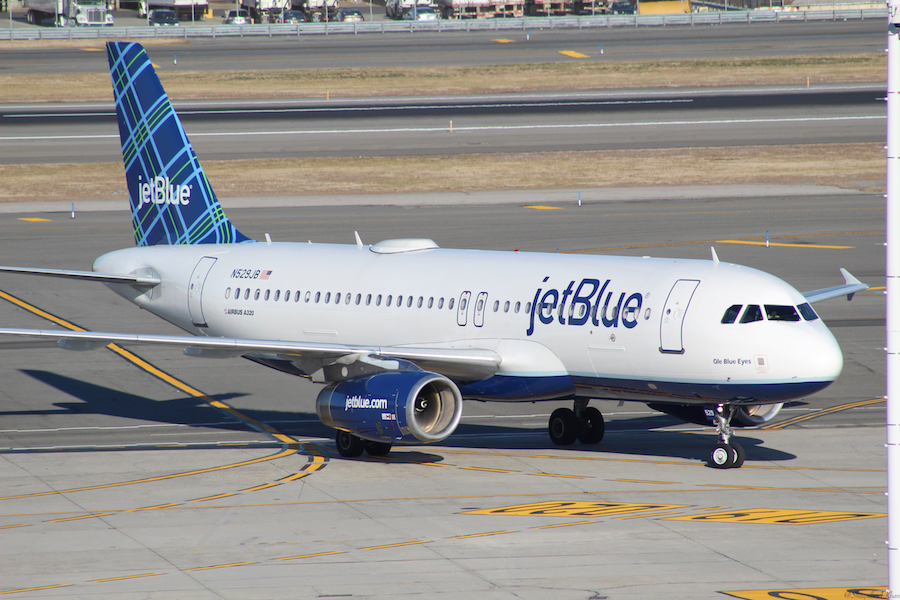The average domestic air fare increased to $393 in the fourth quarter of 2014, up 2.0 percent from $385 in the fourth quarter of 2013, adjusted for inflation, the US Department of Transportation’s Bureau of Transportation Statistics (BTS) reported today. Of the 100 busiest airports, during the October to December 2014 period, passengers originating in Madison, Wisconsin, paid the highest average fare, $505, while passengers originating in Sanford, Florida, paid the lowest, $99.
BTS reports average fares based on domestic itinerary fares. Itinerary fares consist of round-trip fares, unless the customer does not purchase a return trip. In that case, the one-way fare is included. One-way trips accounted for 31 percent of fares calculated for the fourth quarter of 2014. Fares are based on the total ticket value, which consists of the price charged by the airlines plus any additional taxes and fees levied by an outside entity at the time of purchase. Fares include only the price paid at the time of the ticket purchase and do not include fees for optional services, such as baggage fees. Averages do not include frequent-flyer or “zero fares,” or abnormally high reported fares. Constant 2014 dollars are used for inflation adjustment.
Tarifs aériens ajustés en fonction de l'inflation
Fourth-quarter fares rose 10.2 percent from the recession-affected low of $348 in 2009 to the fourth quarter of 2011. Since 2011, fourth-quarter fares have shown little change, increasing 2.4 percent from 2011 to 2014.
The fourth-quarter 2014 fare was down 14.4 percent from the average fare of $459 in 2000, the highest inflation-adjusted fourth quarter average fare in the 19 years since BTS began collecting air fare records in 1995. The 14.4 percent decline took place while overall consumer prices rose 37 percent. Since 1995, inflation-adjusted fares declined 10.8 percent compared to a 55.4 percent increase in overall consumer prices.
US passenger airlines collected 71.2 percent of their total revenue from passenger fares during the third quarter of 2014, the latest period for which revenue data are available, down from 1990 when 87.6 percent of airline revenue was received from fares.
Tarifs annuels
The average fare of $391 for the full year 2014 was up 0.6 percent, inflation-adjusted, from the 2013 average fare of $389 but down 16.2 percent from the inflation-adjusted annual high of $467 in 2000. Not adjusted for inflation, the $391 average fare in 2014 is the highest annual fare since BTS began collecting air fare records in 1995, 2.5 percent higher than the previous high of $382 in 2013.
QUE RETENIR DE CET ARTICLE :
- 4 percent from the average fare of $459 in 2000, the highest inflation-adjusted fourth quarter average fare in the 19 years since BTS began collecting air fare records in 1995.
- Not adjusted for inflation, the $391 average fare in 2014 is the highest annual fare since BTS began collecting air fare records in 1995, 2.
- Fares are based on the total ticket value, which consists of the price charged by the airlines plus any additional taxes and fees levied by an outside entity at the time of purchase.






















